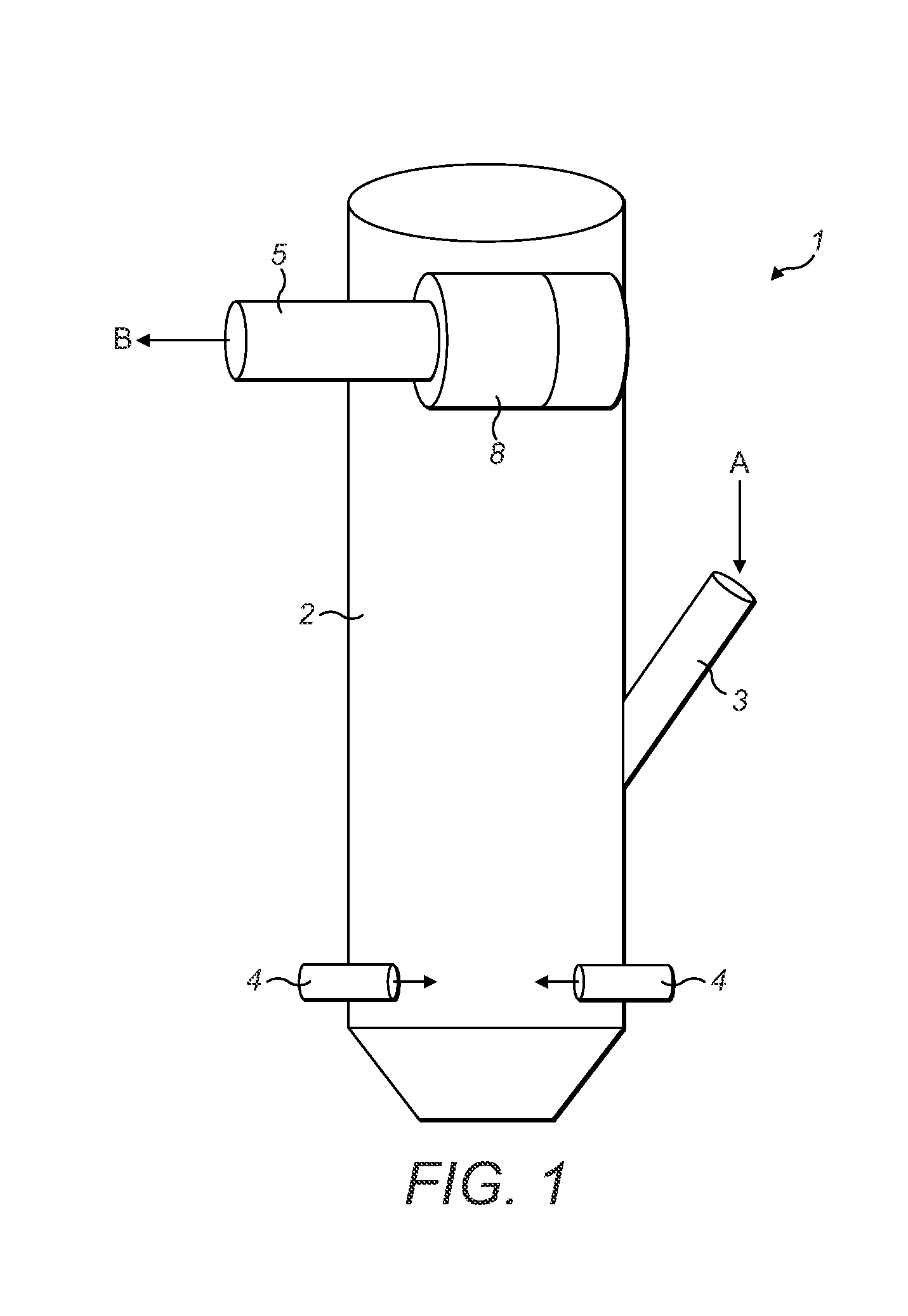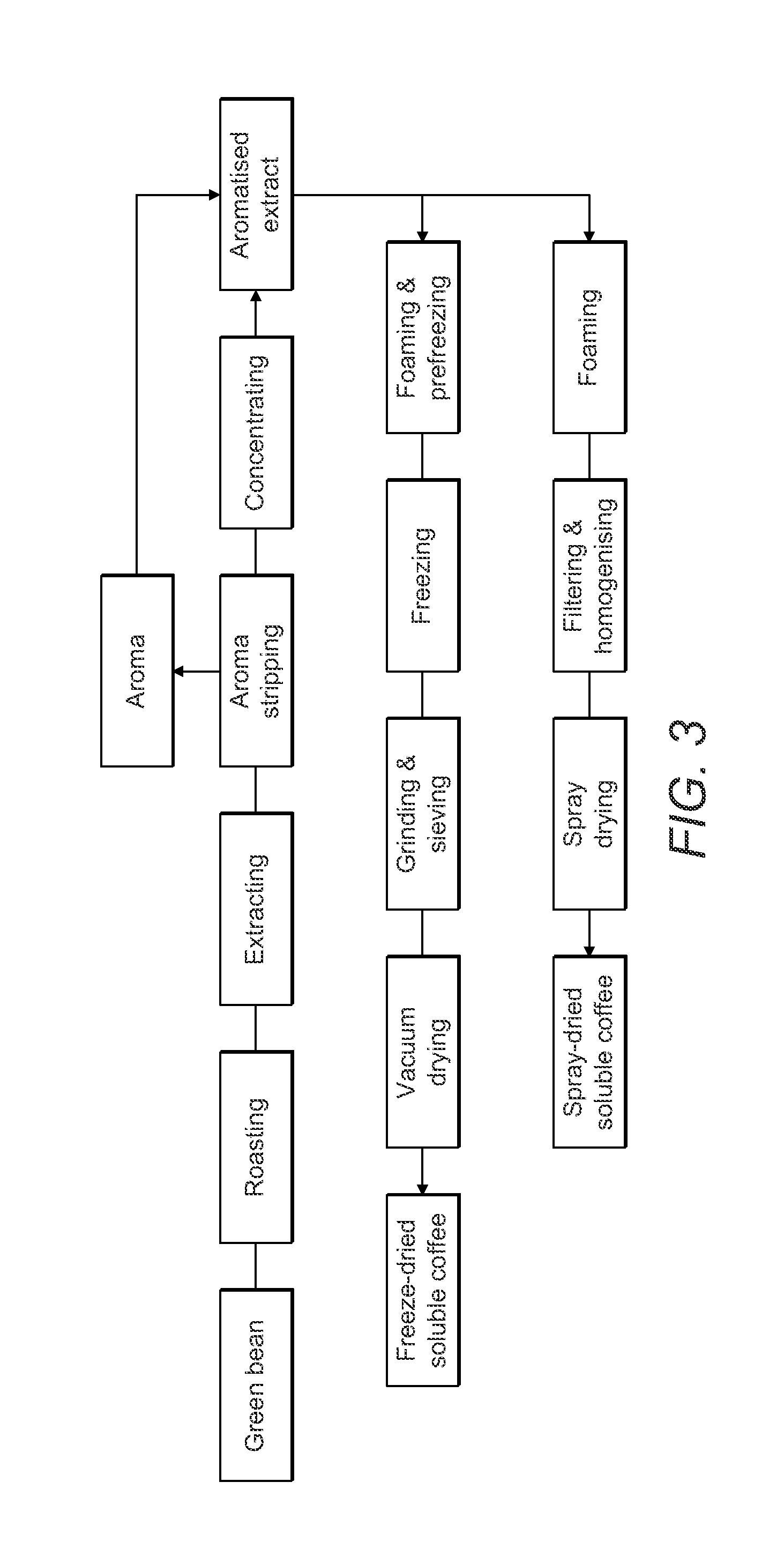Coffee products and related processes
a technology of coffee products and coffee concentrate, applied in the field of coffee products and related processes, can solve the problems of reducing the quality of coffee, affecting the grinding process, and the non-hydration region of roasted ground coffee which never fully ‘wet’, so as to reduce the particle size of roasted coffee and enhance the milling
- Summary
- Abstract
- Description
- Claims
- Application Information
AI Technical Summary
Benefits of technology
Problems solved by technology
Method used
Image
Examples
examples
[0170]To illustrate the beneficial dispersion qualities of the jet milled and blended coffee intermediate, the following samples were prepared as follows:
Sample 1 (Comparative)
[0171]100% Arabica beans, roasted to colour 8.5 La, then cryogenically ground using prior art techniques. 15% by dry weight of the resultant ground material was then dry mixed by hand with 85% of Arabica-based dried soluble coffee—end composition 15% by dry weight roasted ground coffee, 85% by dry weight equivalent soluble coffee.
Sample 2
[0172]15% Arabica beans roasted to colour 8.5 La, then jet milled with 85% Arabica-based, dried soluble coffee—end composition 15% by dry weight roasted ground coffee, 85% by dry weight equivalent soluble coffee.
Sample 3
[0173]30% Arabica beans roasted to colour 8.5 La, then jet milled with 70% Arabica-based, dried soluble coffee to form blended intermediate. 50% by dry weight of blended intermediate dry mixed by hand with 50% by dry weight of Arabica-based dried soluble coffee...
PUM
 Login to View More
Login to View More Abstract
Description
Claims
Application Information
 Login to View More
Login to View More - R&D
- Intellectual Property
- Life Sciences
- Materials
- Tech Scout
- Unparalleled Data Quality
- Higher Quality Content
- 60% Fewer Hallucinations
Browse by: Latest US Patents, China's latest patents, Technical Efficacy Thesaurus, Application Domain, Technology Topic, Popular Technical Reports.
© 2025 PatSnap. All rights reserved.Legal|Privacy policy|Modern Slavery Act Transparency Statement|Sitemap|About US| Contact US: help@patsnap.com



